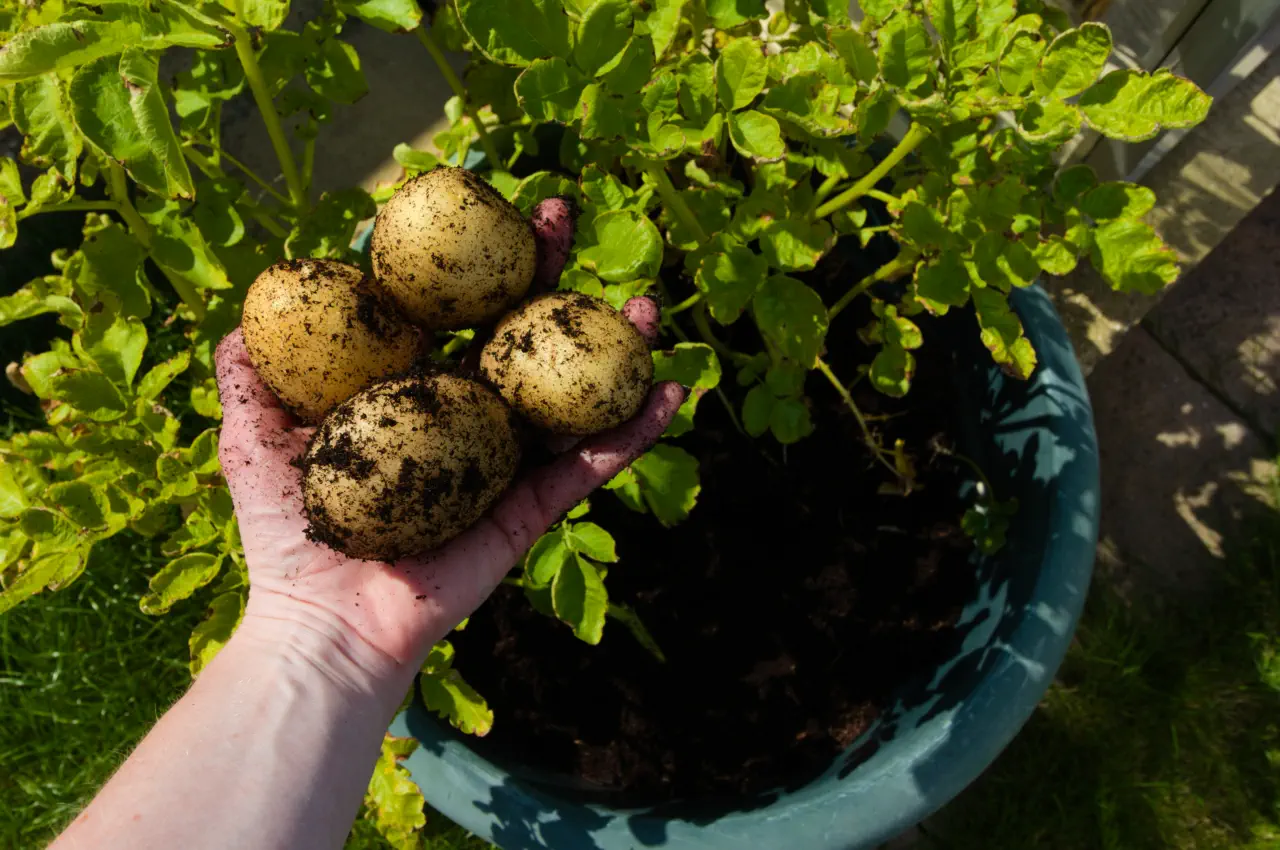March marks the official start of spring, bringing longer days, warming temperatures, and the perfect opportunity to get your garden ready for the growing season.
Here’s a comprehensive list of key gardening tasks to tackle this month....

Ever since the humble potato was brought to England back in the late 16th century, it has graced our dinner plates, in one form or another on a daily basis. In 2021, farmers and growers in the UK alone produced over 5.3 million tonnes of potatoes, making it the most popular vegetable of all time. The potato is the most important component of our staple diet for many reasons. Not least because it’s versatile and it’s nutritious and thankfully, it’s very easy to grow. Due to a series of hybridisation and cross breeding programmes, there are potatoes that will grow in a wide range of soils and environments.
Soil types vary greatly all over the UK from light sandy soils to heavy clay soils but whatever soil type you have, there is likely to be a seed potato variety that will be suited. We are also fortunate in having 3 choices when it comes to harvesting times, from earlies, second earlies and maincrop. Early and second early potatoes are often referred to as new potatoes. These are relatively small and have light skins making them ideal for cooking whole. They are usually ready for harvesting in June or July or 12 weeks from sowing. Second early potatoes are harvested 2-3 weeks later. These varieties are the perfect choice for growing in bags at home.
Some of the best seed potatoes for growing on in containers are the early and second early varieties. That’s because these potatoes are much smaller than maincrop types and therefore need less room. However, you still need quite large containers to accommodate all of the new tubers that will be produced. A first early seed potato can produce approximately 7 times its own weight in new potatoes. A maincrop seed potato can produce approximately 12 times its weight. In both cases, it can be more depending on the quality of the soil and growing conditions.
The ideal type of containers for growing potatoes are large pots, buckets or tubs of at least 30 litre capacity although 40 litre (40cm pot) sizes are better. Plastic dustbins are ideal for maincrop varieties although it should be stated that maincrop potatoes grown in open ground will more than likely produce a better yield. Potato bags or patio bags are they are sometimes called, are perfect for growing early and second early potatoes and as the name suggests, they can be used to grow your potatoes on the patio.
First, chit (sprout) the seed potatoes by placing them in egg boxes and positioning them in a warm sunny place for a few days. Next, fill your containers to about a third of its depth with a general compost. For a 30 litre container place one seed potato in the centre. For a 40 litre or bigger container, place 3 seed potatoes, evenly spaced. Cover the seed potatoes with compost so that two thirds of the container is now full. As the emerging plants get bigger, add more compost until the container is full to within 2.5cm of the top. Apply water regularly and feed the plants with fish, blood and bone or a proprietary potato fertiliser.
Early and second early potatoes are ready for harvesting when the plants have finished flowering. Just tip the container over and collect the new tubers. Maincrop potatoes are ready when the tops have died down completely.
Maincrop seed potatoes are planted or sown during April and require a longer growing period, which can be as much as 26 weeks. This can result in a large harvest at the end of summer from late August to October. These are the potatoes that store well due to their thicker skins and so if stored properly, can provide you with a supply throughout the long winter months. Earlies, second earlies and maincrop potatoes can all be grown successfully by the amateur gardener in their own garden or on their allotment but they do need quite a bit of room. However, this shouldn’t be a barrier to growing them as they will also grow happily in bags or deep containers.
Not everyone has spacious gardens or allotments, so taking a little time to plan what type of potatoes you want to grow and where, will reap big rewards. For example, you could plan to grow earlies and second earlies in potato bags and containers, leaving your vegetable plot or allotment for free for maincrop potatoes. Alternatively, and if space is very limited then you could simply grow maincrop potatoes only, in bags or containers. It’s all about getting the most from your limited space and there are plenty of variety choices to help you decide which one might be best for you.
What's your favourite potato variety for growing in containers, and why? Leave a comment below and let everyone know....
All blog content on this page is copyright of SimplySeed and is not to be reproduced without prior written permission. ©